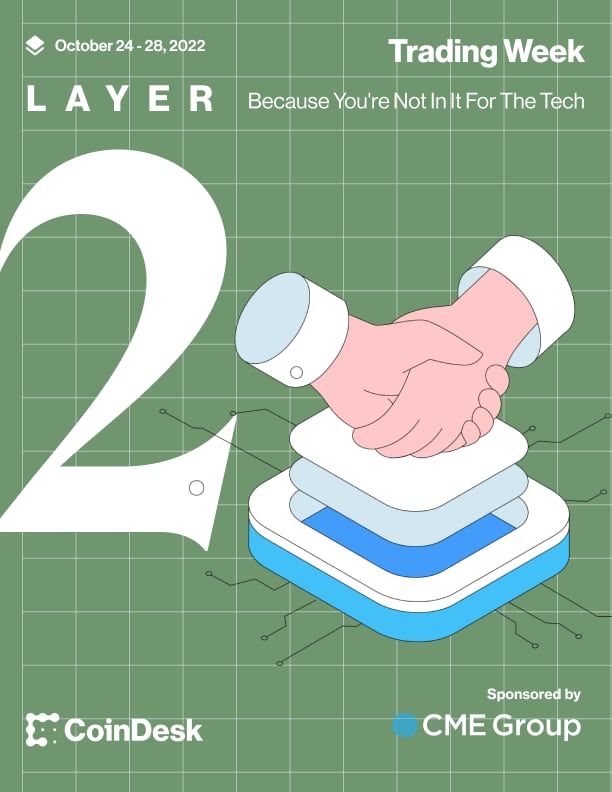The vast majority of cryptocurrencies available on the market today use public blockchains to verify and record data. Because of this, the data is available “on-chain” for everyone to see, at any time and from anywhere in the world.
Sign up for CoinDesk’s Learn Crypto Investing Course.
On-chain analysis refers to the method of using information from a blockchain ledger to determine market sentiment. More specifically, it involves looking at transaction data and crypto wallet balances – two things that are useful when trying to decide whether to make an investment or not. After all, if a token isn’t being traded by anyone and a vast majority of its circulating supply is controlled by a handful of large holders, known as whales, then it’s probably not a good idea to invest in it.
On-chain tools you can use
In response, innumerable platforms and sources have sprung up that each offer insightful charts and dashboards to better help users visualize blockchain data and track the movements of crypto and individual wallets.
Many of these on-chain analytics platforms are either free or at least offer plenty of free features. Some of the popular ones include:
But on-chain analysis doesn’t tell you what to do. It's up to you to devise a strategy based on available information. Here are some suggestions on how to make the most out of the blockchain data dump.
Bitcoin movements
Bitcoin (BTC) is the world’s first viable cryptocurrency and the largest by market cap. Because of this, the price movements can often cause a domino effect throughout the rest of the market; meaning if the price of bitcoin rises, so, too, do other crypto assets, and vice versa. Thus, many investors typically keep a close eye on bitcoin’s on-chain activity.
Glassnode offers highly granular metrics for on-chain Bitcoin data, such as the movements of bitcoin whales, open interest in the futures trading market, mining difficulty and realized market cap. Some of the metrics are free to registered users, while others require a subscription.
:format(jpg)/cloudfront-us-east-1.images.arcpublishing.com/coindesk/TVRQKIJ3AVFPVESEVC64N2JZMM.png)
Some metrics improve on existing ones and represent a combination of different data points that can be highly useful for identifying longer-term market trends.
The concept of Coin Days Destroyed (CDD) was proposed in 2011 by BitcoinTalk forum user “ByteCoin” as an alternative to the Transaction Volume metric, which, they said, doesn’t take into account data manipulations that happen when one address moves around the same coin multiple times. CDD gives more weight to how many days a coin has been kept, so someone who received one BTC 10 days ago would hold the same weight as someone moving 10 BTC received one day ago. That can give you insights into HODLing behavior of bitcoiners, as the following analysis making use of CDD suggests:
Smart contracts and the flow of smart money
In traditional finance, “smart money” refers to any capital that is controlled by professional investors, institutions and funds. The term has also entered the DeFi lexicon, where it refers to institutions like crypto venture capital funds or whales (those who hold proportionally large amounts of crypto).
Nansen is a popular source for tracking where smart money is flowing in and out. The platform has labelled more than 100 million individual wallets so that they don’t appear as 0x32456 but as “3 Arrow Capital” and so on. It offers free features including “Hot DeFi Contracts,” which lets you follow what projects those in-the-know are currently busy playing with, such as a liquidity pool on Avalanche as the picture below shows.
:format(jpg)/cloudfront-us-east-1.images.arcpublishing.com/coindesk/BS4I7B5SIVBSRDUEL2FHRD6UPQ.png)
Data on specific projects
If you’re after data related to a specific DeFi or NFT project, you’re likely to find it on Dune Analytics, a free contributor-run platform that wants to be the GitHub of Web 3.
:format(jpg)/cloudfront-us-east-1.images.arcpublishing.com/coindesk/SARSG6DTV5FC7BZ4UBLYHJS4VA.png)
Dune has a couple of dashboards similar to Nansen’s smart money tracking. For instance, you can see what the holders of the most expensive NFT collection, Bored Apes Yacht Club (BAYC), are buying and selling. But you’ll need to search for dashboards like these individually.
Read More: How to Use Dune Analytics
NFT insights
The recent white-hot trend of NFTs has also led to an array of on-chain analysis tools specifically focused on the NFT market.
CryptoSlam offers NFT sales volume, while Icy.Tools lets you view real-time sales data.
Because the price of items in an NFT collection are often determined by their rarities, traders use tools like Rarity.Tools and LuckyTrader to understand where an individual item’s rarity sits in a collection based on on-chain data.
BlockProbe is an example of a platform that has a Deal Spotter feature, which tells users when a particular NFT is selling at a bargain based on a collection’s data.
For big-picture analysis, one particularly popular source is Dune’s dashboard on OpenSea activity. NFT traders use this dashboard to gauge sentiment, with daily volumes of over $100 million generally thought to be an indicator of a bullish NFT market.
:format(jpg)/cloudfront-us-east-1.images.arcpublishing.com/coindesk/3F5MWIK2NZBGVPH4Q6USHYV37Y.jpg)

:format(jpg)/www.coindesk.com/resizer/cf1kR8sJUKycGTI40TT9_eeAx1Y=/arc-photo-coindesk/arc2-prod/public/6J6HCAS4DFGXDM67B2NO7QZICU.png)